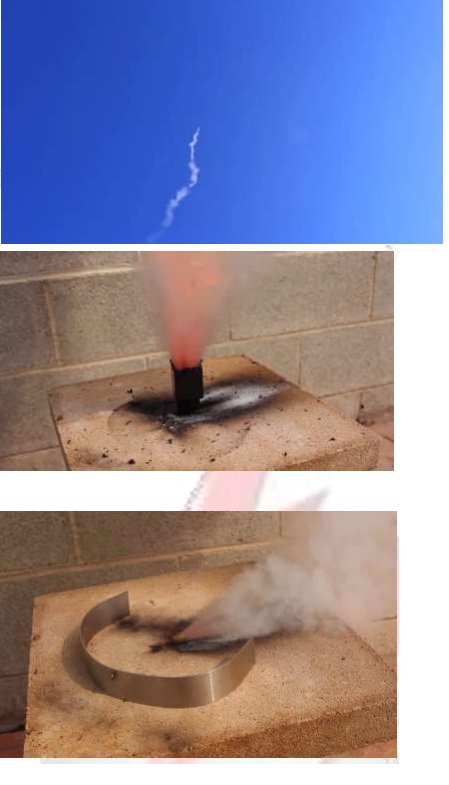





Published on Apr 02, 2024
To study the ignition property of potassium nitrate with sugar
We built and tested rocket engines using Potassium Nitrate & Sugar. We aim that Potassium Nitrate & Sugar can be used as rocket propellant engine for effective performance. The engines were made completely from PVC casings. The experiments were carried out via tests in which the rocket engine was mounted nozzle-end-down in a test stand, so that when the engine was ignited it pressed up against gravitational pull to produce a thrust force to lift it up.
The following is the chemical equation for the combustion of Potassium Nitrate and sugar.
5O2 + 4KNO3 + 2C6H4O6 ---> 12CO2+ 4H2O + 2N2 + 2K2CO3
Potassium nitrate has a low health rating and is not flammable at all. It has a rating of three in instability but that is to be expected since we want it to be explosive to be able to propel our engines. It will be contained in small quantities to minimize the effects of a rare explosion The safest, cheapest, most reliable, and easiest to apply system of propulsion is the one in which only solid fuels are used. In particular, the nitrate based propellant is very popular. When preparing a nitrate-based fuel, the components must be dissolved to ensure thorough mixing and a uniform texture throughout the fuel. One of the most efficient nitrate-based propellants is a mixture of potassium nitrate and sugar, commonly referred to as "Rocket Candy." This fuel is commonly used by amateurs. Our rocket engines are comparable to commercial model rocket engines.
1. Beaker
2. Glass Rods
3. Burner
4. China Dish
5. Kno3
6. Sugar
7. PVC Pipe
8. PVC Cap
The engine casing was made from a 8-1/4" long 1” Schedule 40 PVC pipe. One end was covered with an end cap, with the nozzle fixture inside of it.
The length and width of the PVC pipe were chosen specifically because the diameter of 1” is small enough to be safe, but still large enough to work with. If we were to halve the amount of propellant used by the engine, we would have two options.
The first would be to decrease the diameter of the PVC pipe so as to maintain the length of the grain.
This would make building the engine extremely hard, not only because of the fact that everything is so much smaller, but because of parts availability issues, such as finding the correct size washers. Another option would be to keep the same width, but use a much shorter PVC pipe.
This would dramatically decrease burn time and thrust, meaning that any errors in any of the measuring equipment will be amplified greatly. Approximately 125 grams of propellant will be used inside of one engine.
1. Ensure that the sugar and KNO3 are grounded to fine powders. Put them into a container and shake them.
2. Use a double pan arrangement to melt the KNO3 and sugar, with canning wax used in the bottom pan as the heat transfer medium. The reason for this is that wax does not change temperature too easily, thus eliminating a quick spike in temperature which could ignite the propellant. Throughout the melting process, the wax will remain steady at 250°F. The mixture is stirred with a wooden dowel until it is completely molten and has a homogeneous consistency.
3. The molten mixture will be transferred to a casting stand made from PVC identical to that of the actual engine casing and lined with paper. Within this stand, the propellant will cool and form a solid block that we can then transfer into the actual engine.
4. Transfer the molten mixture to the casting stand by first actually pouring it into the casting stand straight from the pan, and then by ladling the rest in using a flexible spatula.
The rocket goes up with high speed for short distance
High flame & smoke produced.

POTASSIUM NITRATE is an oxidizing agent.
Sugar can be used as a fuel base with nitrates.
1. www.wikipedia.com/Pigments
2. www.google.com
3. www.1000sciencefairprojects.com
4. www.odinity.com/synthesis-malachiteverdigris/
5. www.ionicviper.org
6. www.webexhibits.org
7.www.compoundchem.com